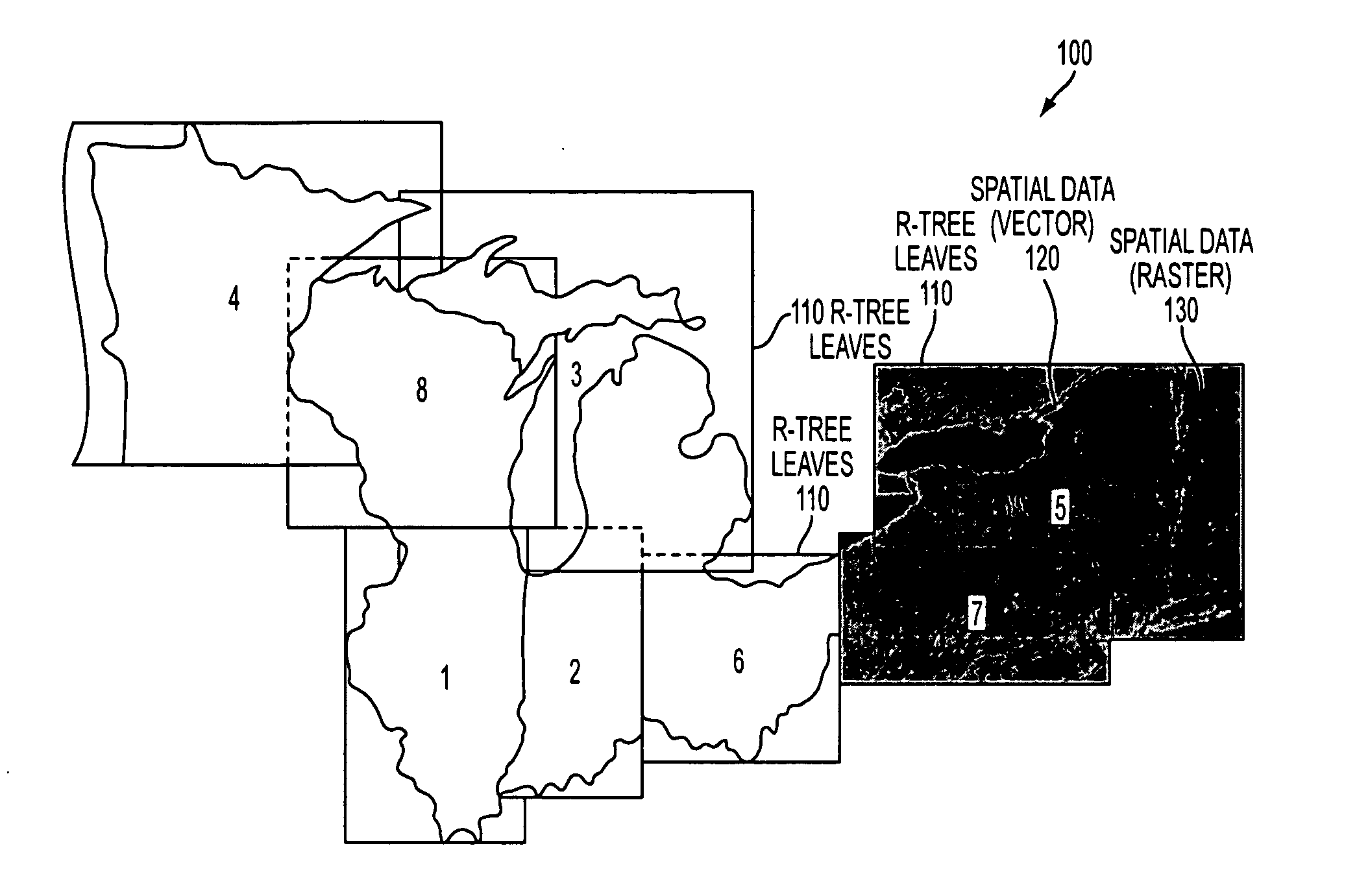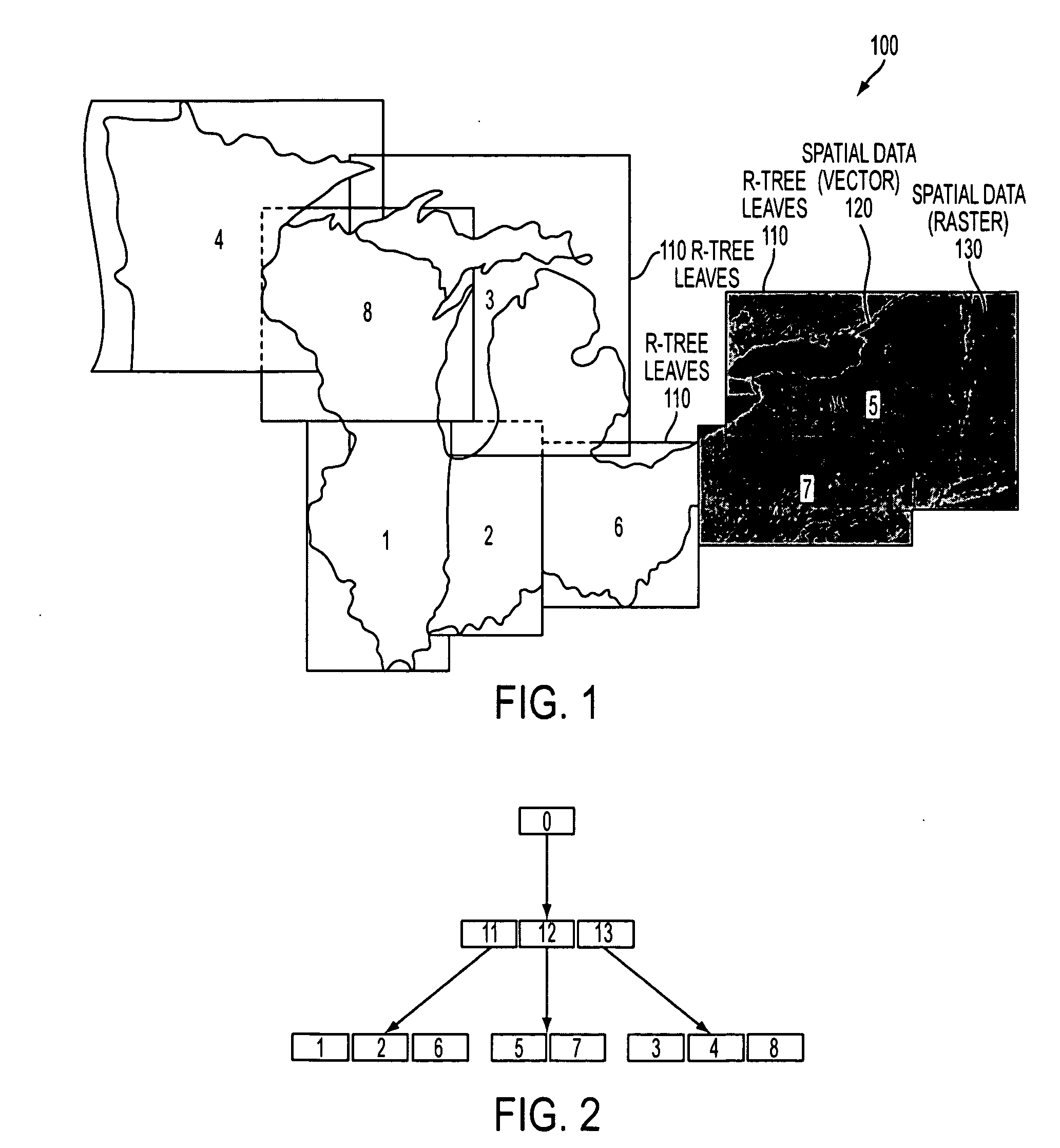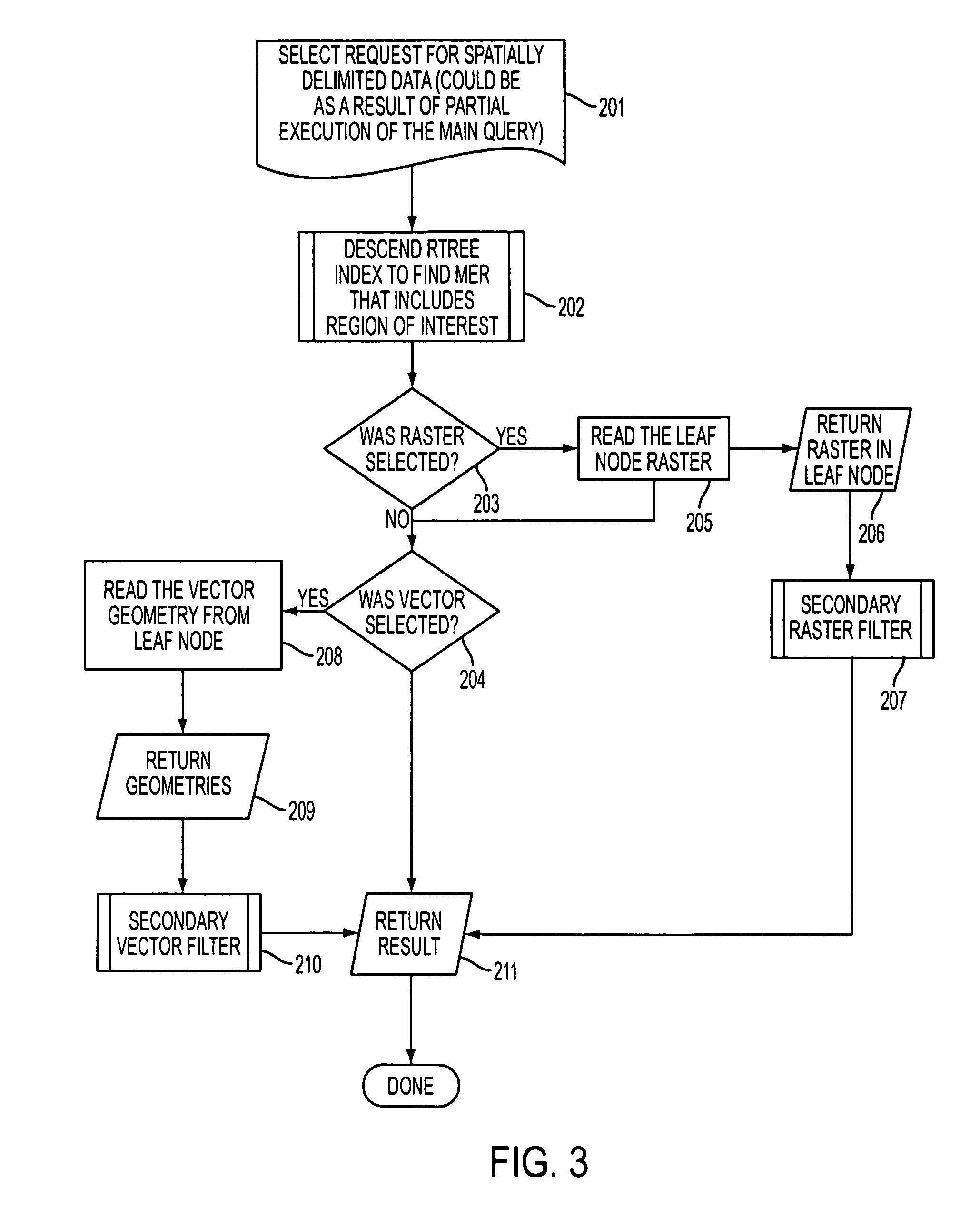Method and apparatus for indexing, storing and retrieving raster (GRID) data in a combined raster vector system
a combined raster vector and data technology, applied in the field of indexing, storing and retrieving raster and vector data, can solve the problems of large volume of such data, tight processor performance restrictions, and particularly troublesome hardware restrictions of this natur
- Summary
- Abstract
- Description
- Claims
- Application Information
AI Technical Summary
Benefits of technology
Problems solved by technology
Method used
Image
Examples
Embodiment Construction
[0021] The invention proposes that the R-trees (or its variants, such as R*trees) for the vector data be reused as a mechanism for query and retrieval of raster data in conjunction with or instead of the vector data.
[0022] Typically, in the prior art, the vector feature would first be retrieved or queried and then a buffer created. The imagery would be requested and the buffer would then be used to clip the imagery, and finally the image footprint and the attribution would be joined. When the image and vector data exist in the same leaf of the index, the raster data can readily be cut with the vector representation (e.g., the buffer) within the single query and with only one index lookup.
[0023]FIG. 1 is an illustration of a simplified R-Tree constructed in accordance with the invention. FIG. 2 illustrates the hierarchal flow chart of the layering effect of the R-tree structure 100 of FIG. 1. Referring to FIGS. 1 and 2, the invention uses the Minimum Enclosing Rectangle (MER) of th...
PUM
 Login to View More
Login to View More Abstract
Description
Claims
Application Information
 Login to View More
Login to View More - R&D
- Intellectual Property
- Life Sciences
- Materials
- Tech Scout
- Unparalleled Data Quality
- Higher Quality Content
- 60% Fewer Hallucinations
Browse by: Latest US Patents, China's latest patents, Technical Efficacy Thesaurus, Application Domain, Technology Topic, Popular Technical Reports.
© 2025 PatSnap. All rights reserved.Legal|Privacy policy|Modern Slavery Act Transparency Statement|Sitemap|About US| Contact US: help@patsnap.com



